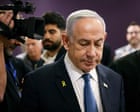
In the wake of the recent Middle East conflict, Israel’s Prime Minister Benjamin Netanyahu spoke of opportunities for peace following Israel’s military engagements with Iran. Despite the political tensions surrounding the situation, there is an optimistic undertone in the Prime Minister’s assertion that the recent “victory” could pave the way for expanded peace agreements. Netanyahu’s longest-serving tenure is viewed by supporters as a potential platform to achieve more substantial regional stabilization.
Amidst these assertions, Israel’s internal political landscape remains complex. The multifaceted challenges stemming from past security failures, notably the incidents from October 7th, still loom large over Netanyahu’s administration. While his supporters are hopeful for a political boost following the conflict’s apparent conclusion, enduring political divisions could still pose significant hurdles to tangible progress.
Meanwhile, the humanitarian impact of the ongoing crises in the region has led to international scrutiny. The United Nations, alongside other humanitarian organizations like Médecins Sans Frontières, has voiced grave concerns over the US-backed food distribution scheme in Gaza. There are alarming reports regarding the Israeli forces’ involvement near food distribution sites, with accusations of deliberate shooting at civilians attempting to obtain food supplies. Palestinian witnesses and health officials report substantial casualties, further complicating the already dire humanitarian landscape.
The Israeli Defense Forces (IDF) have since opened an investigation into these alleged incidents of targeted violence toward civilians. The inquiry aims to address the mounting evidence suggesting potential war crimes, affirming the need for accountability and adherence to international human rights standards. Such steps, while bringing some hope for justice and reform, highlight the intricate balance needed between security operations and humanitarian considerations in conflict zones.
Outside of Israel and Gaza, the conflict has had considerable repercussions. In Tehran, Iran held a momentous state funeral for victims of the so-called “War of the 12 Days,” marking the largest such observance in decades. The event drew thousands to the streets, reflecting both grief for the lives lost and intense anti-Israeli and anti-American sentiment. These gatherings symbolize the heightened emotions and political complexity permeating the region as nations grapple with the human cost of geopolitical strife.
Across the borders in Ukraine, tensions manifest differently yet remain palpable. The city of Odessa recently experienced a Russian drone attack, which resulted in tragic casualties. Although Ukrainian air defenses successfully intercepted the majority of the drones, the assault underscores broader regional insecurities linked to ongoing conflicts.
As the atmosphere evolves, global and regional players continue to navigate a landscape marked by conflict, diplomacy, and humanitarian crises. The call for peace and cooperative engagement remains fervent, as international stakeholders look towards a future where negotiation prevails over hostility, and human welfare takes precedence. Through mindful reflection and deliberate actions, there remains a shared hope for a more peaceful and compassionate global community.
Source: {link}
